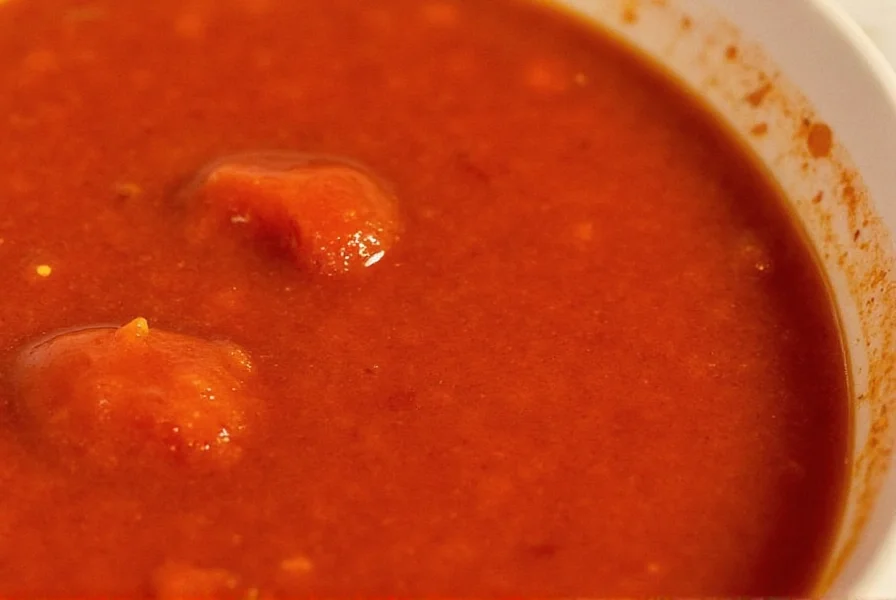The best homemade chili sauce starts with 1 pound fresh red chili peppers (like arbol or guajillo), 3 garlic cloves, 1 teaspoon cumin, 1/2 teaspoon salt, and 1/4 cup water. Roast peppers until blistered, remove stems and seeds, then blend with other ingredients until smooth. Simmer for 10 minutes to deepen flavors. This authentic chili sauce recipe yields approximately 1.5 cups of vibrant, versatile sauce perfect for tacos, eggs, or dipping. Adjust heat level by varying pepper types and quantities.
Creating exceptional homemade chili sauce transforms ordinary meals into culinary experiences. Unlike store-bought versions filled with preservatives and artificial flavors, fresh chili sauce made from scratch delivers vibrant, complex heat that enhances rather than overwhelms your dishes. This comprehensive guide reveals professional techniques for crafting restaurant-quality chili sauce in your own kitchen.
Why Homemade Chili Sauce Beats Store-Bought Every Time
Commercial chili sauces often contain high-fructose corn syrup, artificial colors, and excessive sodium to extend shelf life. When you make chili sauce from scratch, you control every element—heat level, sweetness, acidity, and texture. Fresh ingredients provide brighter flavors and more nuanced heat profiles. Plus, homemade chili sauce contains no preservatives, making it healthier and more authentic.
Essential Ingredients for Authentic Chili Sauce
The foundation of great chili sauce lies in carefully selected ingredients. Understanding each component's role ensures consistent results:
| Ingredient | Function | Recommended Quantity | Substitution Options |
|---|---|---|---|
| Dried Red Peppers | Primary heat and flavor | 8-10 pods (1oz) | Fresh red jalapeños or serranos |
| Garlic | Depth and complexity | 3-4 cloves | 1/2 teaspoon garlic powder |
| Cumin | Earthy undertones | 1 teaspoon | Coriander or oregano |
| Acid Component | Brightness and preservation | 2 tablespoons | Vinegar, lime juice, or tamarind |
| Sweetener | Balance heat | 1 teaspoon | Honey, sugar, or fruit |
Equipment You'll Need
While you can make basic chili sauce with minimal equipment, these tools ensure professional results:
- Cast iron skillet or comal (for authentic roasting)
- Immersion blender or high-powered countertop blender
- Fine mesh strainer (for smoother sauces)
- Heatproof spatula
- Small saucepan
- Gloves (essential when handling extremely hot peppers)

Step-by-Step Preparation Guide
1. Proper Pepper Preparation
Remove stems and shake out most seeds from dried peppers. For milder sauce, remove all seeds and white membranes. Place peppers in a dry skillet over medium heat for 30-60 seconds per side until fragrant but not burnt. Alternatively, soak dried peppers in hot water for 20 minutes until softened.
2. Roasting Technique
Heat garlic cloves (with skin on) and cumin seeds in the same skillet until garlic is golden and cumin is aromatic. This dry-roasting technique unlocks deeper flavors compared to adding raw ingredients to the blender.
3. Blending Process
Combine rehydrated peppers, roasted garlic (squeezed from skins), cumin, salt, and 1/4 cup water in blender. Start on low speed, gradually increasing to high. Blend for 2-3 minutes until completely smooth, scraping down sides as needed. For restaurant-quality texture, strain through fine mesh sieve, pressing with a spatula.
4. Simmering to Perfection
Pour blended mixture into saucepan. Simmer uncovered for 8-10 minutes, stirring occasionally, until sauce reduces slightly and flavors meld. Properly cooked sauce should coat the back of a spoon. Avoid overcooking, which diminishes fresh flavor.

Troubleshooting Common Issues
Even experienced cooks encounter challenges with chili sauce preparation. Here's how to fix frequent problems:
- Too thin: Continue simmering to reduce, or add small amounts of tomato paste
- Too thick: Gradually incorporate warm water, 1 tablespoon at a time
- Too spicy: Balance with acid (lime juice) or sweetness (honey), not more liquid
- Bitter taste: Indicates over-roasted peppers; counter with 1/2 teaspoon sugar
- Flat flavor: Add pinch of salt and fresh lime juice to brighten
Regional Variations Worth Trying
Explore these authentic chili sauce variations to expand your culinary repertoire:
Mexican Salsa Roja
Use 6 dried guajillo peppers and 2 pasilla peppers. Add 1/2 white onion and 1 roma tomato roasted with the peppers. Traditional in central Mexico, this versatile sauce works with enchiladas, tacos, and eggs.
Thai Nam Prik
Substitute fresh bird's eye chilies (5-10 depending on heat preference) with 1 tablespoon fish sauce, 1 teaspoon palm sugar, and 1 minced shallot. This Thai chili sauce serves as both condiment and cooking base.
Caribbean Scotch Bonnet Sauce
Blend 3 scotch bonnet peppers with 1/4 cup vinegar, 2 tablespoons mango puree, and 1 teaspoon allspice. The tropical fruit balances intense heat for jerk marinades and seafood dishes.
Preservation Techniques for Long-Lasting Flavor
Proper storage maintains your homemade chili sauce's quality:
- Refrigeration: Store in airtight container for up to 3 weeks
- Freezing: Portion into ice cube trays, then transfer to freezer bags for 6 months
- Canning: Process in water bath for 15 minutes for shelf-stable storage (12+ months)
Always leave 1/2 inch headspace in jars. For canning safety, maintain pH below 4.6 by including adequate acid (vinegar or citrus).
Expert Tips for Perfect Chili Sauce Every Time
Professional chefs rely on these techniques for consistent results:
- Wear gloves when handling extremely hot peppers like habaneros or ghost peppers
- Toast whole spices separately before grinding for maximum flavor release
- Let finished sauce rest overnight; flavors deepen significantly
- Freeze extra sauce in 2-tablespoon portions for easy recipe incorporation
- Label containers with pepper variety and heat level for future reference











 浙公网安备
33010002000092号
浙公网安备
33010002000092号 浙B2-20120091-4
浙B2-20120091-4